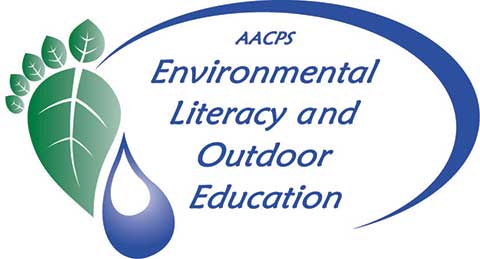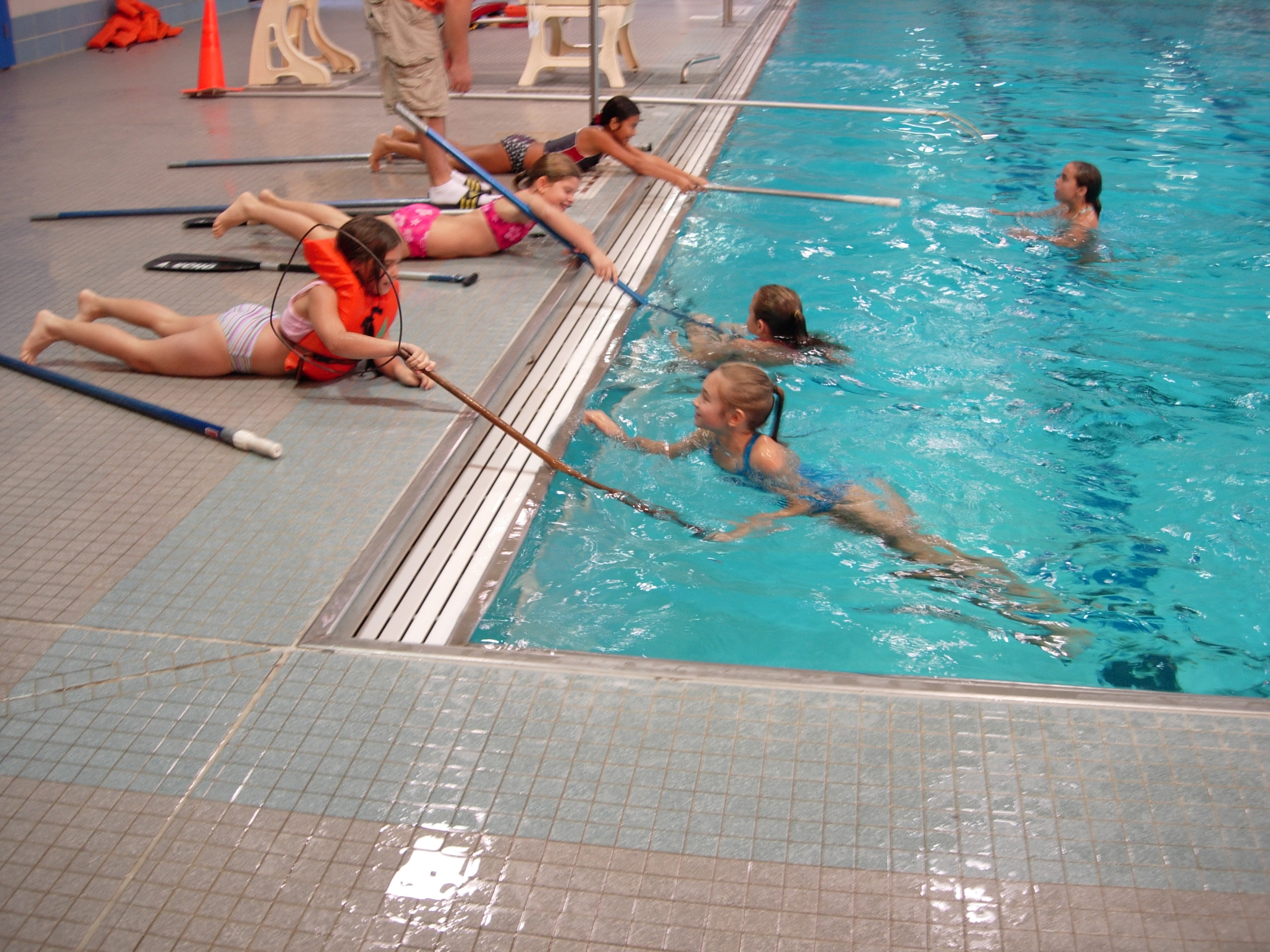Water Ready Grade 5
The Water Ready Program is a comprehensive aquatic safety program for fifth grade students in Anne Arundel County Public Schools. Students learn personal water safety skills through classroom and pool instruction. At school, water safety readiness lessons are taught by classroom teachers. Students are transported to one of two pools used for the water portion of the program. The Anne Arundel County Recreation & Park’s Arundel Olympic Swim Center in Annapolis is used throughout the school year. The pool at Arlington Echo Outdoor Education Center is only used for a few schools. Water Safety instruction is taught in by certified aquatic safety instructors. Lessons focus on personal water safety, use of personal flotation devices (PFDs), safe rescues of others, cold water survival techniques, hypothermia and ice safety. Volunteers are needed to supervise students at the pool and assist instructors.
The Water Ready curriculum aligns and supports the 5th grade Language Arts and Physical Education standards. The preparation, action, and reflection that is embedded into the Water Ready program satisfies 5 of the 75 hours of service learning required for graduation.
For more information about water safety, click HERE.
Students
In preparation for the Water Ready, please follow the guidelines below. Classroom teachers will also share this information with students before the program.
Students are to wear/bring the following equipment to the pool:
- Students wear their bathing suits under their school clothes
- Pack underwear for changing into after the aquatic’s lesson.
- Pack 2 towels
- Pack extra set long sleeve shirt and long pants to get wet
Suggestions to make things run smoothly:
- School clothes should be easy for students to put on when changing after swim time. These clothes should be worn over their swim wear and will be put into a locker to stay dry during instruction. These clothes will be dry for changing into when the students travel back to school.
- For a simulated Cold-Water Survival lesson, students will bring an extra set of winter clothes to put on over their swim wear. (Long sleeve shirt and long pants) These should not be too tight as the students will be wet when putting them on.
- 2 towels- 1 for the pool deck gets very wet; 1 for the locker room to dry off at the end.
- A brush or comb and a ponytail holder for students with long hair.
- Glasses case is recommended for students who wear glasses.
- Goggles may be worn if they do not cover the nose, but will not be allowed if they interfere with instruction.
- A T-shirt or shorts may be worn over the swimsuit or swim trunks for swimming but should not be baggy or get in the way while swimming.
- Neutral scented lotions and hair de-tangler can be brought, but not shared.
Students are NOT to bring:
- Money or valuables such as watches or jewelry.
- Cell phones or electronic devices.
- Hair dryers, shampoo, soap or hairstyling products such as hair gel or hair spray.
- Students will not be showering.
- Perfume, body spray, or scented lotion.
- Glass or mirrors.
- Snorkel masks, nose plugs or aqua shoes.
Volunteers
Volunteers are an integral part of the Water Ready Program, helping to meet the safety and instructional needs of the students. They serve as Readiness Assistants and sometimes Aquatic Assistants under the supervision of a program instructor. Volunteers do not need to get into the water.
In preparation for Water Ready, please follow these guidelines:
- All Volunteers must have a fingerprint supported background check completed through Anne Arundel County Public Schools prior to volunteering.
- Please call 410-222-5045 to make an appointment. Recommended to complete THREE WEEKS prior to the trip date.
- Complete Sexual Harassment and Child Abuse Prevention training.
- Arrive at the pool THIRTY MINUTES prior to the students and remain for the last group from your school.
- Attend a volunteer orientation at the pool before students arrive.
- Read through the volunteer information for more details on responsibilities.
- Check Volunteer Board in classroom upon arrival at the pool for your name.
- Aquatic Assistants bring swim wear and towel. Lockers are available for a fee or items can be stored on volunteer tables in the classroom.
- Dress for the climate of the pool and locker room areas: Readiness Assistants should be prepared for the warmth of the pool while Aquatic Assistants should be prepared for the chill.
- Younger siblings are not permitted to attend.
- Volunteers may want to bring a water and snack. The students will be eating after their aquatic’s instruction ends and they have changed into their dry clothes. Volunteers are assisting all 5th grade students and may be on site longer than the students. There will not be time for a lunch break.
Volunteer Responsibilities:
- Reinforce pool rules at all times.
- Assist in supervising the students while at the facility.
- Supervise in the locker rooms from outside the privacy curtain.
- Assist instructors with adhering to a fast paced time schedule of getting students ready for instruction and ready to load bus.
- Be alert to the needs of students and instructors.
- Be at the pool edge monitoring students’ safety.
- Be enthusiastic, patient, persuasive and encouraging.
- Use positive statements when giving instructions.
- Positive verbal reinforcement is crucial! A smile also helps!
Instructional Program
Water Ready is an aquatic safety education program. Swimmers and non-swimmers will gain water safety skills according to each individual’s ability. Students have an option to take a deep water test if that is something they have done before. Students that are more comfortable being where they can touch the bottom of the pool, will be in the shallow area of the pool where they can stand up. Students will complete a handbook and lessons in the classroom in addition to in-pool lessons.
Personal Safety: How do I save myself if I were to get into trouble in the water?
- Briefly discuss the causes of drowning.
- Discuss expectations and student responsibilities.
- Screening will be done based on swimming ability to place students in instructional groups.
- Skills will be taught based on where the assessment has placed the student: deep water or shallow water.
Personal Flotation Devices (PFDs): Your Friend for Life
- Discuss proper size, shape and types of PFDs.
- Demonstrate how to put on a PFD on land and in water.
- Observe a demonstration on the use of the five classes of PFDs.
Non-Swimming Rescues: How do I save someone safely without endangering myself?
- Discuss and demonstrate the proper steps when evaluating an emergency situation.
- Perform a non-swimming rescue.
Cold Water Survival: Cold Water Can Kill
- Briefly discuss hypothermia and cold water survival.
- Swim with a long pair of pants and long-sleeved shirt.
- Inflate clothing to make a flotation aid.
Non-Swimming Rescues: How do I save someone safely without endangering myself?
- Discuss and demonstrate the proper steps when evaluating an emergency situation.
- Perform a non-swimming rescue.
Contact
Heather McCarthy hhmccarthy@aacps.org
Amy Grief agrief@aacps.org
Water Ready Voicemail 410-222-5855
Arlington Echo 410-222-3822


